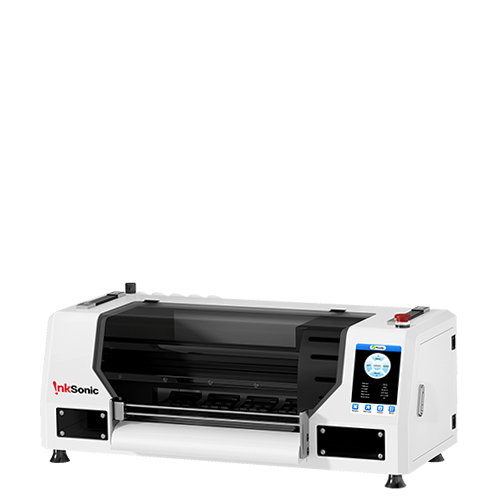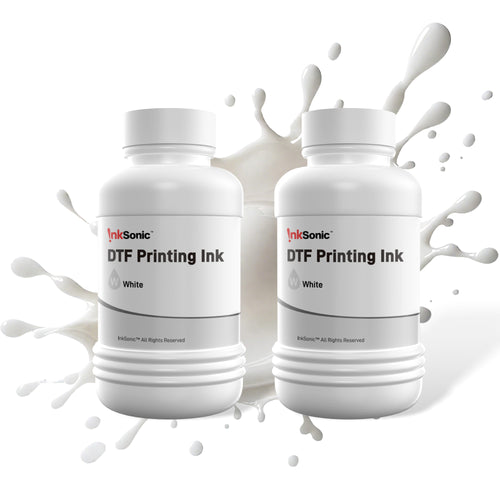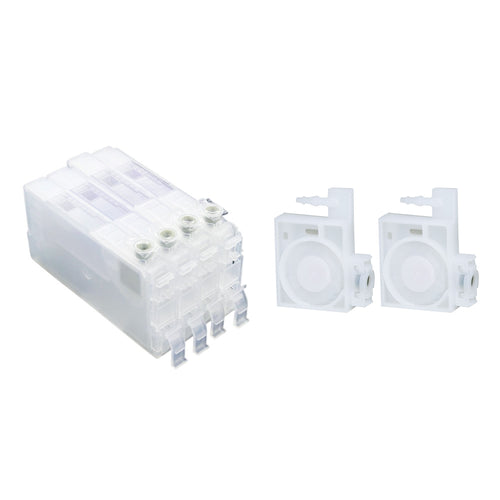Lately, forums focused on entrepreneurship and small businesses have been flooded with posts, sparked by eufyMake's official launch of the eufyMake E1 UV Printer after months of hype, and it started crowdfunding on Kickstarter. So far, it has raised a staggering $27 million, and the number is still climbing. This product is on track to potentially break Kickstarter's all-time fundraising record, predicted by Sam, who is an electronic product manager in the crowdfunding field.
But amid the frenzy, it's worth taking a step back to calmly consider two questions:
On the technological front, the printing industry has long been marked by sharply divided technological barriers in a rapidly evolving tech landscape. So, does this product truly live up to its marketing claims of breaking through the limits of 2D and 3D printing, merging the two into one?
From an investment perspective, if you're thinking of using it to kick off your creative journey or start a small business, is it really a worthwhile investment?
As a R&D professional, my answer is obvious — eufyMake E1 UV Printer is not as revolutionary as claimed, though 3D Texture, what they’ve been promoting, got everyone excited. It's worth noting that eufyMake’s predecessor was AnkerMake, a company that you may have heard of due to its fierce competition in the 3D printing field against brands like Bambu Lab and Creality, and ultimately falling short. Given this background, they naturally have a base of 3D printing enthusiasts, even 3D printing farm owners, hoping to achieve high profit margins with this machine, like they would with a traditional 3D printer.
Upon checking the marketing page, the sample prints showcased include embossed fridge magnets, lizard skin textures, and other 3D-related features, while they even gave the printer an extremely tempting title: “The First Personal 3D-Texture UV Printer.” What’s interesting here is they didn't call it a 3D UV Printer, but rather a 3D-Texture UV Printer. The marketers are clearly trying to blur the line between 3D printing and 3D texture printing.
But, what exactly is 3D Texture? To understand that, we need to start with the traditional UV flatbed printer, which is often called the “versatile workhorse” of printers because they can print on almost any flat material — wood, acrylic, ceramic, glass, canvas, and more.




Irregular metal surfaces:


or printing cups or cans using special cylindrical fixtures:

If you can’t imagine the texture mentioned above, let’s take an example you may be familiar with. Take a look at your phone case—it’s likely printed by a UV flatbed printer. By touching it, you can feel the so-called texture.

Yes, you’ve already noticed the similarities between the E1 and UV flatbed printers from the above examples — both can print 3D textures, especially for widely-used commercial products like phone cases, transfer stickers, and decorative art pieces. Also, 1-5 mm print thickness is very basic, while it is a core highlight of commercial UV flatbed printers.

Unlike 3D printers, we must acknowledge that UV flatbed printers — and the E1 as well — fall short when you actually see the printed results. The final output remains constrained to 2.5D, and the difference from actual 3D printing is quite noticeable. So far, you might be aware that the features that the eufyMakeE1 offers are nothing new — all UV flatbed printers can do the same creations. Also, if you're doing business of making UV stickers like cup wrap, you must have noticed that quite a few desktop UV DTF printers have emerged specifically to balance the demands of productivity, speed, first and ongoing investment from 2022.
Okay, okay, step back.. You’re probably thinking, “Well, I already figured out—or at least now realize—that the eufyMake E1 is just a nromal UV flatbed printer.” But didn’t it allow us to produce small-batch, home-based prints at just 1/10 the price of a commercial UV flatbed printer which usually takes $10000+ and even more?
That’s true — traditional UV flatbed printers are primarily designed for commercial printing. If you're purchasing the E1 just for personal interest or hobby use, then it might be a good choice.
But if your goal is to commercialize your small-batch creations and make a profit, I’d advise you to hold on and take a moment to reconsider. The eufyMake E1 might end up being the most expensive UV flatbed printer out there, when viewed from the perspective of cost-effectiveness and long-term return. Let’s dig deeper.
1. Accessory Costs
The E1 comes equipped with three key modules: the printing platform, Rotary Printing Attachment, and UV DTF Laminating Machine.
● Printing Platform
The printing platform is a standard component for all UV flatbed printers. Interestingly, the E1 comes with a unique test paper used for nozzle test prints, which is meant to be stuck onto the platform to ensure printing accuracy and protect the platform from ink contamination, especially when you print on irregular-shaped items. But this also means that once you run out of the free test sheets, you’ll likely need to scan the thoughtfully provided QR code to purchase more from their official site.
Tip: You can actually just use an ordinary sheet of paper or tape instead. This might help you save a little money.

● Rotary Printing Attachment
The Rotary is typically used to hold cylindrical objects, enabling rotation for curved surface printing, and is included as a standard accessory with many other brands. In contrast, the E1’s Rotary Printing Attachment is designed to accommodate both cylindrical and conical mugs, which sounds great, but purchasing this add-on will cost you an extra $399 (regular price).



● UV DTF Laminating Machine
AB film is essential for making transfer stickers, a type of sticker widely used on almost any material except fabric. This may be useful for hobbyists or small business expansion. However, unlike UV DTF printers that combine printing and laminating into one machine, UV flatbed printers can only print on the A film. To make transfer stickers, you’ll need a UV DTF laminator — and again, you’ll need to spend another $399 to unlock this feature.

Additionally, you’ll need to prepare both A film and B film, which are necessary consumables for this process. Beyond that, the workflow involves multiple time-consuming steps:

Step 1: Stick a layer of sticker base tray onto the print platform.

Step 2: Place the A film over the paper and print — note: the A film is proprietary, meaning you can't simply purchase compatible alternatives elsewhere.

Step 3: Wait for the laminator to heat up to a certain temperature, then press the printed film until the B film covers the whole print.

If you're unfamiliar with this process, check out the YouTube channel @BitnerBuilt. In his test , it took 19 minutes to create just 3 stickers (each approx. 6mm x 6mm in size).
Don’t forget about the loss rate. Anyone experienced with transfer stickers production knows that A and B film typically have a loss rate of about 20%, due to errors in handling or insufficient UV curing. For beginners, the loss rate can exceed 50%. As of today, we still don’t know how eufyMake will price these proprietary consumables.
For business owners with a large volume of sticker production needs, a commercial UV DTF flatbed printer with faster print speeds and lower material waste may be a better option. For example, with the Inksonic VF13 UV DTF printer , you can print 60+ designs of the same size in the same time span, making it 20 times more efficient. Equipped with the DX7 printhead, it achieves 0.8–1m²/h printing speeds. There are no size limitations, no complicated steps since it’s a 2-in-1 UV DTF printer with integrated printing and laminating. Once you've arranged your designs freely on the digital canvas, you simply click “Print,” and the final product is ready for sale. It even features a material-saving mode that automatically optimizes the layout to reduce waste.


● Laser Positioner
The eufyMake E1 comes with four lasers, which may seem to enhance print accuracy and efficiency at first glance, but in reality, they are an unnecessary addition for a desktop UV flatbed printer. For this level of equipment, a single laser positioner is sufficient to solve the problem of positioning accuracy. Even most commercial UV flatbed printers only use one laser sensor, which is enough for auto-detecting materials and adjusting print height.
E1’s design not only increases manufacturing costs but also raises long-term maintenance expenses. Anyone who’s used a DTF or UV printer knows — buying the machine is just the first step. Maintenance is often the reason many people end up abandoning their devices.
2. Time Cost
• Print Speed
By now, it's clear that the eufyMake E1 is essentially a scaled-down version of a traditional UV flatbed printer. Its marketing appeal largely comes from emphasizing its maximum print thickness as a breakthrough. However, this focus comes at the cost of sacrificing some of the most practical values — namely, print speed and ink efficiency.
Let’s take a look at the eufyMake E1’s actual performance in terms of speed:
Wood art enthusiast @BitnerBuiltWoodworking ( YouTube link ) demonstrated several print results of different sizes and patterns. Using the default print platform, it took 3 hours and 45 minutes to complete a single 1 mm-thick design.
And when attempting to print the advertised 5mm texture? The result is shocking: 8 hours.
If you want to achieve rich, oil painting-like results, the time involved becomes even more unpredictable. Of course, you'd better be satisfied with the final output, or a second round will take another whole working day.
But it does raise the question — why is the print speed so slow?
This is where consumers need a bit more insight from a printer expert. Like all mechanical devices, long-term usage leads to heat buildup. The E1’s compact design is largely thanks to the use of motors tailored to its smaller body. While we don’t have the exact model numbers of E1’s internal components, based on the print duration alone, we have to question whether it can handle such heavy workloads over extended periods.
As we all know, even smartphones and computers heat up with prolonged use, let alone a precision machine like a printer. Producing a high-quality image requires full coordination among various components inside the machine. In order to keep the printer running, its carriage motors CR must operate non-stop. Sustained high temperatures could cause the system to slow down. In addition to the reason that repeatedly stacking ink layers slows printing speed, that’s likely a major contributor to the excessive delays.
What’s worse, if motor fatigue causes a sudden interruption mid-print, it can be incredibly frustrating.
On top of that, the optimal operating temperature for a printhead is between 20–30°C. If the head overheats from spraying continuously for hours, it may result in ink flow issues. This could ruin the entire print job, and all that wait time would be wasted. At that point, you’d likely be forced to contact their tech support.

































